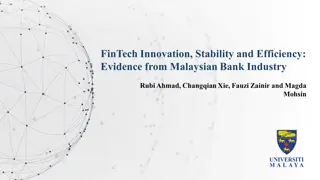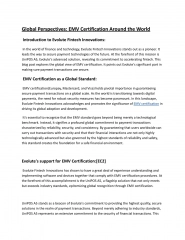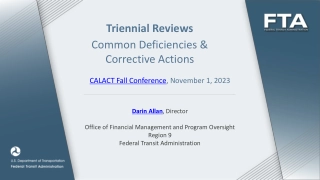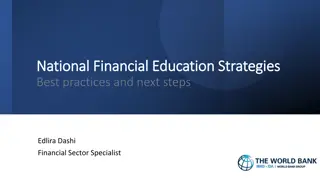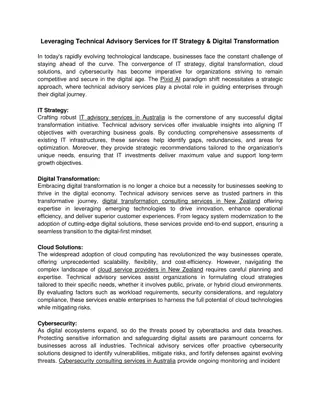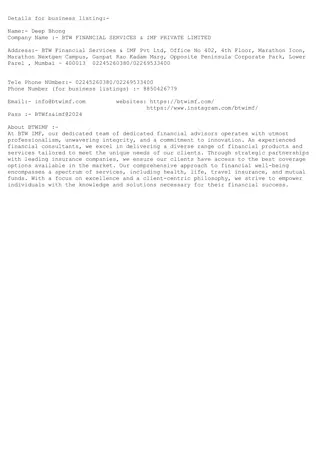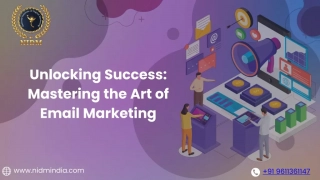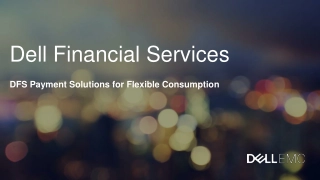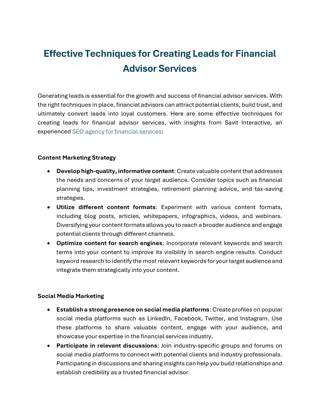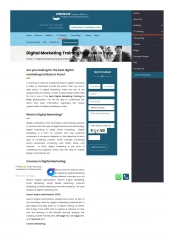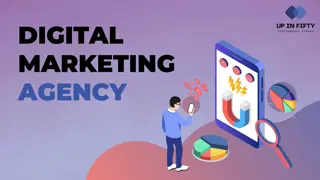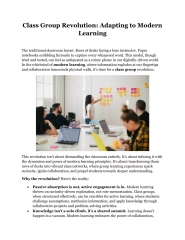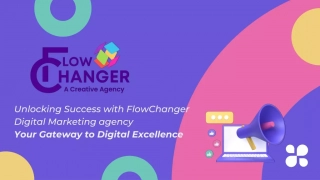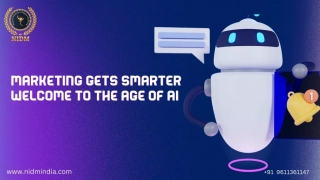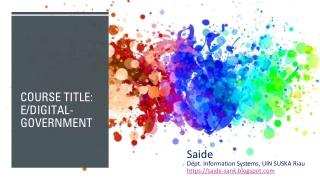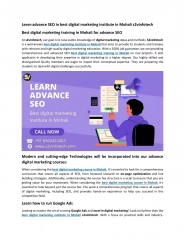AI in Financial Services: Digital Revolution and Fintech Disruption
The digital transformation in financial services is driven by AI, sparking a social revolution impacting all aspects of life. Industry 4.0 brought FinTech disruption, creating new ecosystems and partnerships for innovative financial solutions. Incumbents and regulators have responded with strategies like enhancing digital banking and promoting open banking APIs. However, Neo banks face challenges including regulatory hurdles, profitability issues, and customer retention concerns. The real storm lies in the AI revolution, shaping humanity's future like never before.
AI in Financial Services: Digital Revolution and Fintech Disruption
PowerPoint presentation about 'AI in Financial Services: Digital Revolution and Fintech Disruption'. This presentation describes the topic on The digital transformation in financial services is driven by AI, sparking a social revolution impacting all aspects of life. Industry 4.0 brought FinTech disruption, creating new ecosystems and partnerships for innovative financial solutions. Incumbents and regulators have responded with strategies like enhancing digital banking and promoting open banking APIs. However, Neo banks face challenges including regulatory hurdles, profitability issues, and customer retention concerns. The real storm lies in the AI revolution, shaping humanity's future like never before.. Download this presentation absolutely free.
Presentation Transcript
UNLEASHING THE POTENTIAL OF AI IN THE DIGITAL TRANSFORMATION OF THE FINANCIAL SERVICES Mohammed Kateeb
THE STORM The Fourth Industrial Revolution Sparked a profound shift in our lives, work, and interactions, driven by a set of transformative technologies including AI. Changed all aspects of our lives. It triggered a complete social revolution that not only has an economic impact, but also political, social and others.
Industry 4.0 The FinTech Disruption Ignited a wave of digital transformation across the Financial Sector. Fintechs are created from the womb of this revolution. Startups around the world realized that they could democratize financial services and provide great customer experience. New era where a new global, regional, and local ecosystems were created. These ecosystems relied on vertical and horizontal partnerships forged between incumbents, with fintechs, neobanks and other disruptors, and ultimately with third parties to create entirely new classes of financial services and fresh revenue streams. Fintech allowed access to new markets, innovative, low-costpersonalized products, and greater efficiencies.
THE INCUMBENT'S RESPONSE Enhance digital banking Partner with fintechs Acquire fintechs Launch digital attackers Invest in innovation THE REGULATORS RESPONSE OPEN banking API Sandboxes, innovation hubs, and accelerators Aggressive regulations (EU PSD2, UK Open Banking) Promoting financial inclusion and innovation
NEO BANKS UPDATE Neo banks are facing some challenges in the current market: Competition from traditional banks: Regulatory hurdles: Some neo banks have faced regulatory scrutiny and challenges in obtaining banking licenses and complying with various rules and standards. For example, Digit was fined by the Consumer Financial Protection Bureau for falsely advertising a no-overdraft guarantee. Low profitability: Some neo banks have struggled to generate revenues and profits from their low-fee or no-fee business models. For example, Monzo reported a loss of 113.8 million ($156.4 million) for the fiscal year ending February 2022. Customer retention: Some neo banks have faced difficulties in retaining customers and increasing their engagement and loyalty. For example, a survey by Momentive found that only 29% of US digital banking customers use their neo bank as their primary account . Banking Crisis caused major trust issue. Silicon Valley Bank (SVB), First Republic Bank (FRB) and Signature Bank accounted for 2.4% of all assets in the US banking sector. The failure of Credit Swiss in Europe.
THE REAL STORM THE AI REVELOUTION AI is one of the most important things humanity is working on. It is more profound than, I dunno, electricity or fire, says Pichai, GOOGLE OpenAI s ChatGPT: Most significant tech launches since the original Apple iPhone in 2007. The fastest-growing consumer app in history, hitting 100 million users in the first two months after its release. Google s Bard TII s Falcon Open Source LLM The Year of Large Language Models (LLMs), how does it work? Opportunity: Train LLM on private data of any organization.
THE IMPACT OF AI ON THE FINANCIAL SERVICES INDUSTRY HAS BEEN TRANSFORMATIVE 20XX 7 Pitch Deck
DATA-DRIVEN DECISION-MAKING AI is the bridge between data and insights, transforming information overload into actionable knowledge. AI leverages data analytics to provide actionable insights for financial institutions. It can analyze historical and real-time data, identify trends, and generate accurate forecasts. Investment Decisions Customer Segmentation Pricing and Profitability Analysis Regulatory Compliance Customer Lifetime Value (CLV) Analysis Risk Management
DATA COLLECTION AND ANALYSIS Some banks use AI to collect and analyze large volumes of data from internal and external sources to enhance their operations and performance. HSBC uses AI to automate data extraction from documents such as contracts, invoices, and receipts to reduce manual errors and save time. PREDICTIVE ANALYTICS Some banks use AI to generate predictions and forecasts based on historical data and current trends. Bank of Montreal uses AI to predict customer churn and retention rates by analyzing customer feedback and behavior.
IMPROVED CUSTOMER EXPERIENCE By leveraging AI technologies, financial institutions can deliver tailored, convenient, and user-friendly experiences that meet the evolving expectations of their customers. Virtual Financial Advisors AI-powered virtual assistants Personalized Recommendations Chatbots and Virtual Assistants Intelligent Customer Service Seamless Digital Onboarding Cleo offer personalized budgeting, saving, and spending tips based on individual financial goals and habits Kensho Technologies uses AI to analyze data from various sources such as news articles, social media, and market conditions to generate insights and recommendations for its clients. Wells Fargo uses AI to send personalized alerts and guidance to its customers based on their spending patterns, financial goals, and life events23. Bank of America uses AI to analyze customer spending patterns in order to provide personalized financial advice.
CONVERSATIONAL BANKING Many banks use chatbots to provide conversational banking to their customers, such as answering queries, providing account information, and offering financial advice. Many banks use chatbots to provide conversational banking to their customers, such as answering queries, providing account information, and offering financial advice. Bank of America s Erica chatbot has more than 10 million users and can handle a variety of tasks such as bill payments, credit score updates, and budgeting tips. Ally Financial s chatbot can handle a variety of tasks such as bill payments, credit score updates, and budgeting tips12.
ADVANCED RISK MANAGEMENT AI algorithms can analyze massive datasets, identify patterns, detect anomalies, and predict potential risks. This helps in mitigating risks, preventing fraud, and making informed decisions. Fraud Detection and Prevention Anti-Money Laundering (AML) Compliance Market Risk Analysis Credit Risk Assessment Cybersecurity Threat Detection Compliance Monitoring AI is being used to assess risk in a variety of financial applications, such as credit scoring, portfolio management, and insurance underwriting. This can help financial institutions to make more informed decisions about lending, investing, and pricing insurance. BlackRock uses AI to assess the risk of thousands of different assets in order to manage its investment portfolios.
FRAUD DETECTION AI is being used to detect fraudulent transactions in real time. This can help financial institutions to protect their customers from fraud and to reduce their own losses Mastercard uses AI to analyze billions of transactions every day to identify patterns that could indicate fraud. CYBERSECURITY Some banks use AI to detect and prevent cyber threats and attacks by using anomaly detection, biometric authentication, and behavioral analysis Citibank uses AI to detect anomalies and suspicious activities in its transactions and networks to prevent fraud and cyberattacks. Vectra AI uses AI to monitor network traffic and identify suspicious activities and patterns
COMPLIANCE AND REGULATORY SUPPORT Used to comply with complex regulatory frameworks and various standards such as AML, KYC, Basel III, and General Data Protection Regulation (GDPR). Reducing compliance costs and enhancing the overall regulatory posture of financial institutions. Automated Regulatory Reporting KYC and Customer Due Diligence Privacy and Data Protection Transaction Monitoring Regulatory Change Monitoring Audit and Monitoring Deutsche Bank uses AI to automate its AML processes by screening customers and transactions against watchlists and databases.
LOAN AND CREDIT DECISIONS Some banks use AI to improve their loan and credit decision processes by using alternative data sources and advanced analytics to assess the creditworthiness and risk profile of borrowers. JPMorganChase uses AI to analyze data from various sources such as tax returns, bank statements, and market conditions to provide faster and more accurate lending decisions. Zest AI, for instance, employs machine learning models to analyze bank transactions, utility payments, and social media activity, resulting in more accurate and fair credit scores.
ALGORITHMIC TRADING Algorithmic trading has revolutionized financial markets, contributing to increased liquidity, improved market efficiency, and reduced trading costs. AI is being used to trade financial assets more quickly and accurately. High-frequency traders use AI to analyze market data and to place trades in milliseconds. Execution Speed and Efficiency Sentiment Analysis Quantitative Trading Strategies Market Making Trend Following High-Frequency Trading (HFT)
PORTFOLIO MANAGEMENT AI is being used to manage investment portfolios more efficiently and effectively Robo-advisors use AI to create and manage investment portfolios for clients based on their individual goals and risk tolerance. BlackRock leverage AI to provide investment signals and alerts to their clients. JP Morgan trained ChatGPT like LLM on its private data (Ref. LinkedIn). INVESTMENT RESEARCH AI is being used to research investments and to identify potential opportunities. This can help investors to make more informed decisions about where to allocate their money. Goldman Sachs uses AI to analyze data from millions of different sources in order to identify investment opportunities.
LOOKING AT THE FUTURE, THINGS WILL GET EVEN MORE INTERESTING.. INNOVATION AND COMPETITIVE EDGE AI-driven technologies, Blockchain, digital currencies, decentralized finance (DeFi), Robotics, Metaverse and Augmented reality, Quantum Computing will change everything, And much much more.. These technologies are reshaping the financial landscape. Embracing these technologies allows organizations to stay at the forefront of innovation, develop new business models, and remain competitive in an evolving market.
ETHICAL CONSIDERATIONS Human values, and ethical reasoning to ensure fairness and accountability becomes crucial. Data PRIVACY Protecting individuals' privacy becomes paramount. Robust data governance frameworks, stringent security measures, and transparent data practices are necessary to maintain trust and protect sensitive information. TRANSPARENCY AI CHALLENGES Bias in AI algorithms can perpetuate existing inequalities and discrimination, making it imperative to address and mitigate bias in data and algorithmic models. JOB DISPLACEMENT Reskill and upskill the workforce to adapt to changing roles and ensure a smooth transition in the labor market 19
Establish robust governance frameworks for AI Ethical guidelines, regulatory oversight, and accountability mechanisms. Collaboration between industry, academia, and government is vital to develop standards, best practices, and policies that promote responsible AI development and deployment. NAVIGATING AI CHALLENGES Adopt best practices developing a clear AI strategy, investing in AI talent and infrastructure, fostering a culture of innovation, and ensuring transparency and accountability in AI-driven decision-making. Prioritize our humanity and work AI technologies align with our values, respect our privacy, and contribute to a sustainable and inclusive future. 20
SUMMARY AI's potential in digital transformation is reshaping industries across the board. By embracing AI and leveraging its capabilities, organizations can unlock new possibilities, stay ahead in the competitive landscape, and meet the evolving needs of customers. As AI becomes more pervasive, concerns about ethical considerations, data privacy, transparency, bias, and job displacement are areas that need careful attention. Actions Needed I urge all of you to explore the potential of AI in your respective organizations and industries and analyze its impacts, potential, and challenges. Embrace digital transformation, invest in AI talent and technology. Envision a future where AI-powered innovation drives growth, efficiency, and customer-centricity. Doing that will unleash the potential of AI and shape a brighter future for all industries in our beloved Palestine. Mohammed Kateeb, Strategic Advisor linkedin.com/in/mohammedkateeb





